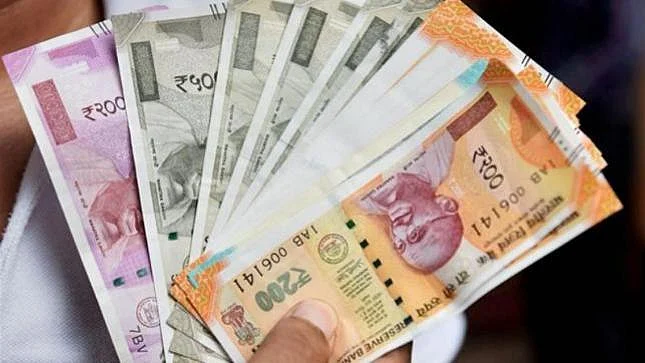Demonetisation: New currency notes issued in 2016 have become ‘unusable’ in 2 years
It has now come to light that new currency notes with higher ‘security’ features introduced after demonetisation are quickly becoming ‘unusable’ within just two years of circulation

It does seem like the PM Narendra Modi-led government simply cannot get anything right. It has now come to light that new currency notes with higher ‘security’ features introduced after demonetisation are quickly becoming 'unusable' within just two years of circulation.
According to sources, this due to the poor quality of the paper used for printing these notes, in comparison with the earlier notes which used to be in circulation for years. If the currency becomes unusable, it can't be used in ATMs as the sensors inside the ATMs can't detect the bad quality notes.
The report on the Hindi news website Amar Ujala, states that the problem is so intense that apart from the ₹2,000 and ₹500 notes, even the new ₹10 notes, which were issued in 2018, are also becoming 'unusable'. The report alleged that the banks have started categorisation of these notes under 'non-issuable' category.
In fact, earlier, the RBI had banned banks from categorising new notes under non-issuable category, but after pressure from commercial banks, the central bank relaxed the rule on July 2, 2018.
Banks categorise notes under 'non-issuable' category when the currency can't be used in ATMs, or be accepted, exchanged by the public. Soiled, torn and dirty notes are classified as 'non-issuable' and are sent back to the Reserve Bank.
According to the circular, “The RBI, with a view to mitigating the hardship to the public in genuine cases, it has been provided that the RBI may, with the previous sanction of the Central Government, prescribe the circumstances in, and the conditions and limitations subject to which, the value of such currency notes or banknotes may be refunded as a matter of grace.”

The Central Bank note also expands the definition of a soiled note. It states that, “A ‘soiled note’ means a note which has become dirty due to normal wear and tear and also includes a two piece note pasted together wherein both the pieces presented belong to the same note and form the entire note with no essential feature missing.”
The Central bank instructed that these notes should be “accepted over bank counters in payment of Government dues and for credit to accounts of the public maintained with banks. However, in no case, these notes should be issued to the public as re-issuable notes and shall be deposited in currency chests for onward transmission to RBI offices as soiled note remittances for further processing”.
However, as is the norm, the government has denied any compromise with the quality of notes and said that the new notes have higher security features to stop counterfeiting.
But, that also has proved to be another ‘jumla’. There has been a sharp rise in the counterfeits of the new currency notes of ₹500 and ₹2,000, according to the figures put out by Reserve Bank of India in its annual report for 2017-18. Counterfeits in the new ₹500 notes rose sharply to 9,892 pieces in 2017-18 from just 199 pieces a year ago. In case of the ₹2,000 notes, the counterfeit notes rose to 17,929 pieces in 2017-18 from just 638 pieces a year ago.
Follow us on: Facebook, Twitter, Google News, Instagram
Join our official telegram channel (@nationalherald) and stay updated with the latest headlines
